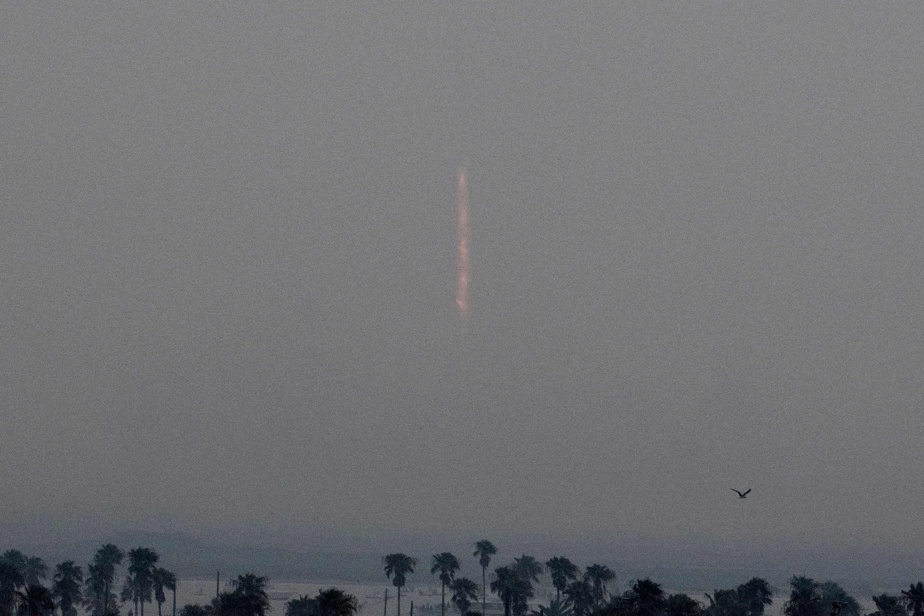(Boca Chica) The rocket Starship of SpaceX, the largest and most powerful in the world, took off Thursday from Texas for a fourth test flight with the aim of returning to the better-controlled Earth atmosphere after about an hour of flight. than during previous tests, which ended with explosions.
Liftoff took place at 7:50 a.m. (8:50 a.m. Eastern) from SpaceX’s Starbase in Boca Chica in far south Texas.
During its last flight, less than three months ago, the spacecraft had gone well beyond the edge of space, but its signal was lost 49 minutes after takeoff, as it descended towards Earth.
The development of Starship is being led vigorously by billionaire Elon Musk’s company by quickly launching prototypes without cargo, in order to correct the problems encountered in flight as soon as possible.
The ship Starship must in particular be used in the long term to transport NASA astronauts to the Moon, for the first time since 1972. The American space agency is therefore closely following its development.
The rocket is made up of two stages: the Super Heavy propulsion stage and, above it, the spaceship Starship, which by extension gives its name to the entire rocket. It measures a total of 120 meters high.
A few minutes after takeoff, Super Heavy detached from the ship and began its return to Earth. For the first time, it then successfully landed in the Gulf of Mexico, SpaceX announced. The ship continued on its way.
During its last flight, less than three months ago, the spacecraft had gone well beyond the edge of space, but its signal was lost 49 minutes after takeoff, as it returned to Earth.
The cause was identified as the loss of control of its orientation in flight due to clogged valves, SpaceX explained, while welcoming all the data recovered during this flight.
Several vehicle “improvements” have been added since then. The first test flight was carried out in April 2023.
Future moonlander
This time, the objectives were to achieve a smooth landing of Super Heavy in the Gulf of Mexico – accomplished – and a “controlled entry” into the atmosphere of the vessel. If he completes his mission, he must end his journey in the Indian Ocean.
“With each test flight, SpaceX aims for increasingly ambitious objectives,” NASA underlined after the third flight. She particularly welcomed the completion of a fuel transfer test during this mission.
Liquid oxygen had been transferred from one tank to another within the rocket, SpaceX confirmed.
Developing this function is essential, because to reach the Moon, Starship will have to refuel once in space, by sticking to another ship previously filled and serving as a space service station.
NASA is counting in particular on Starship for its Artemis 3 mission, planned for 2026: a modified version of the vehicle must then serve as a moon landing craft for its astronauts.
“DearMoon” mission canceled
In addition to its disproportionate size, the great innovation of this rocket is that it must ultimately be entirely reusable.
Elon Musk wants to make it the main instrument to achieve his ultimate goal: the establishment of an autonomous colony on Mars, in order to make humanity a multiplanetary species.
In the meantime, Japanese billionaire Yusaku Maezawa was due to board a trip around the Moon (without landing) this year. But the mission, announced with great fanfare in 2018 and called “DearMoon”, was ultimately postponed to a later date.
And last week, Mr. Maezawa declared that project was canceled: “There is no clear outlook for when we will be able to take off,” he wrote.
SpaceX dominates the space launch market, for example with no less than 14 takeoffs of its Falcon 9 rockets in May alone.
